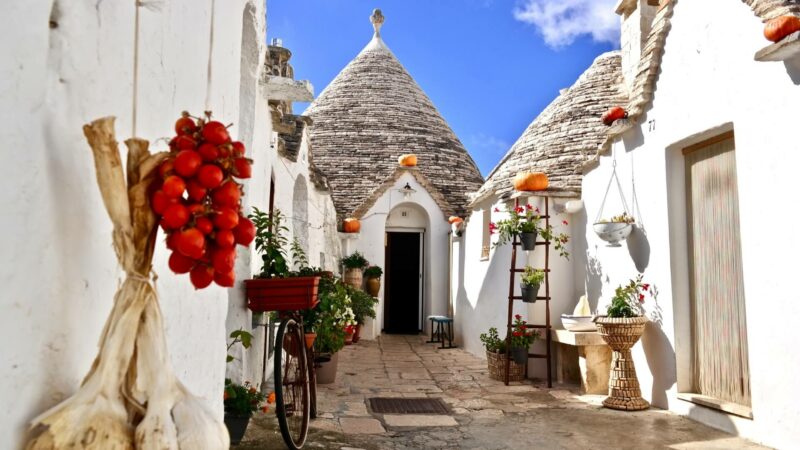Liguria, where man and nature have made history
Do you know what a fan looks like? That curved shape that you open and wave to cool yourself down in the hottest moments of the day. Well, Liguria is like that. And not just because of its curved shape. It’s also because it is a territory that, like few others, will give you space, wind and relaxation thanks to a symphony of wonders that reveal themselves in a strip of land squeezed between the Maritime Alps and the Ligurian Sea. There are no entirely flat territories here, and the reliefs reach all the way to its sheer seaside cliffs. Mountains, sea, and human ingenuity have contributed to colorful perched villages, while every path leading to the coasts will gift the traveler with its unique history.
Ligurian riviera wonder
Speaking of history, Genoa, the capital of the region, is an ancient Maritime Republic. It is a keeper of a proud and dominant past, as evidenced by the sixteenth-century Porto Antico (ancient port). Among the staircases that carve through its hills, there are the creuse which are ancient mule tracks sung about by Fabrizio De André, and the typical narrow alleys called carruggi infused with life. The city reveals its multicultural vitality as a port city, a crossroads of architectural and cultural influences. On one side, there are the ancient majesties of the Cathedral of San Lorenzo, the city’s most important church; the Palazzo Ducale, the home of Christopher Columbus; and the Palazzi dei Rolli, once residences of noble families and now a UNESCO heritage site. On the other side are located more modern works like the Aquarium, the largest in Europe with 15,000 animals from over 400 different species. In addition, there is also the Bigo, the panoramic elevator, a product of the genius of a genuine Genoese, the star architect Renzo Piano. Genoa is internationally renowned for its focaccia. A part of the Slow Food heritage with a creation process worthy of a work of art (eight hours of leavening), focaccia is a sacred ritual for the people of Genoa and an essential dish to be enjoyed even with the morning cappuccino (typically at a historic Genoese café, founded in 1780). East of the city, you will find Recco, where the whisper of tradition can be tasted in the unmistakable flavor of focaccia filled with creamy crescenza cheese, a delicious combination that tells of centuries of gastronomic tradition. Camogli greets you with its colorful buildings, and its ancient history unfolds amidst the charm of the Monastery of San Prospero, the eighteenth-century Abbey of San Fruttuoso, and the statue of the Christ of the Abyss, guardian of the marine depths. Just a little further east lies the Tigullio Gulf, a succession of marvelous coves, where the coolest destinations include Portofino, a symbol of exclusivity and the vibrant heart of sophistication where an aperitif in Piazzetta is a must. Santa Margherita Ligure has always been an elegant retreat for celebrities and entrepreneurs, with frescoed residences in its ancient core. Continuing further, you will find beaches and bays like the Bay of Tales in Sestri Levante, named in honor of the writer Andersen who stayed here, and the Bay of Silence where the journey becomes very intimate, serene, and chic.
Liguria: Cinque Terre, poets' wonders
In the Riviera of Levante, where the sea gently kisses the land, the Cinque Terre rise like jewels nestled between cliffs and dancing waves. There are 18 kilometers of coastline to be traveled like notes in a millennium-old symphony. From ancient agricultural villages linked to the destiny of the Republic of Genoa, Monterosso al Mare, Vernazza, Corniglia, Manarola, and Riomaggiore have gradually transformed into picturesque fishing villages, keepers of a history intertwined with sea and land. They are enveloped in an aura of mystery because they can only be reached through ancient footpaths or by sea. The Cinque Terre are a paradise for hiking enthusiasts, but also for lovers who can hold hands along the Lover’s Lane carved into the rock overlooking the sea. Another corner that has captivated the hearts and pens of numerous poets from Shelley to Byron and from Lawrence to Montale is, indeed, the Gulf of Poets in the bay of La Spezia. The gulf is an amphitheater sculpted by time, where sheer cliffs, small coves, and villages in pastel colors create an incomparable watercolor masterpiece on the canvas of wonder. Here, the must-visit stops are in some of the most beautiful destinations in the region, Lerici and Portovenere. From the latter, you can embark by boat to Palmaria Island, the largest in Liguria, which along with Tino and Tinetto is part of the Porto Venere Natural Park, a UNESCO World Heritage site since 1997.
Liguria on the table: an ode to the palate
When you think of Liguria, its greatest culinary treasure immediately comes to mind: pesto. Pesto is one of the iconic products that has made Ligurian cuisine famous worldwide. This creamy sauce – made with Genoese basil DOP, extra virgin olive oil from Riviera Ligure DOP, Vessalico garlic (a Slow Food presidium), coarse salt, pine nuts, and Parmesan cheese – turns every dish (especially the famous trofie or trenette) into an ode to tradition. Also tempting are pansoti (fresh pasta ravioli) filled with ricotta and dressed with a walnut sauce, and prebuggiun (a mix of typical wild herbs). Naturally, the identity of this region is also expressed through wine, a creation that benefits from vineyards perched on terraces on the rocks overlooking the sea. The sea spray, sun, and wind give the grapes a unique and unmistakable character. Among the native grape varieties are Vermentino and Sciacchetrà, a sweet raisin wine whose production technique is said to have been introduced by Greek exiles.









